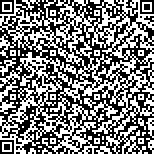| 引用本文: | 栗 健,方伟华,张晓宁,曹诗嘉,杨幸美,刘 行,孙 京.基于多致灾因子相似的热带气旋检索方法研究:以风暴潮-海浪灾害预评估为例[J].海洋科学,2016,40(8):49-60. |
| |
|
| |
|
|
| 本文已被:浏览 1855次 下载 1697次 |

码上扫一扫! |
|
|
| 基于多致灾因子相似的热带气旋检索方法研究:以风暴潮-海浪灾害预评估为例 |
|
栗 健1,2, 方伟华1,2, 张晓宁1,2, 曹诗嘉1,2, 杨幸美3, 刘 行4,5, 孙 京4,5
|
|
1.北京师范大学 环境演变与自然灾害教育部重点实验室;2.北京师范大学 民政部-教育部减灾与应急管理研究院;3.北京师范大学 数学科学学院;4.中国海洋大学 物理海洋教育部重点实验室;5.中国海洋大学 海洋环境学院
|
|
| 摘要: |
| 热带气旋引起的风暴潮-海浪灾害成灾频率高、致灾强度大, 对我国沿海地区造成的人员和经济损失惨重。预评估阶段需要在灾前对研究区可能造成的损失等进行快速的综合判定。从历史热带气旋中检索出与目标热带气旋位置及各种致灾因子强度相似的热带气旋是快速、准确地预评估风暴潮-海浪灾害的重要方法。面向风暴潮-海浪灾害预评估, 提出了一种基于多致灾因子的相似热带气旋检索方法。用于相似检索的致灾因子数据包括: 从中国气象局西北太平洋热带气旋最佳路径数据集中提取并经处理得到的1949~2013 年影响湛江市的112 场热带气旋的路径中心点位置、中心气压、最大风速、最大风速半径及移动速度数据, 112场热带气旋的模拟风场、风暴潮及海浪数据。首先, 利用相似离度方法对热带气旋进行路径相似性检索; 其次, 利用最优相似系数方法计算中心气压、最大风速半径、最大风速、移动速度、风场、风暴潮及海浪强度指标的相似系数进行一次检索; 然后, 根据风场、风暴潮及海浪模拟数据的获取情况, 分别基于路径-强度及风场-风暴潮-海浪综合相似性指标进行二次检索; 最终给出历史热带气旋的综合相似排序。以2013年尤特热带气旋为例, 利用上述方法检索了与其最为相似的5场历史热带气旋。该方法综合考虑了热带气旋路径及多种致灾因子的相似, 兼顾了检索的速度及质量, 是进行快速、准确的风暴潮-海浪灾害预评估的重要基础。 |
| 关键词: 热带气旋 相似性 路径-强度 风暴潮-海浪 损失预评估 |
| DOI:10.11759/hykx20151104001 |
| 分类号: |
| 基金项目:海洋公益性行业科研专项(201305020) |
|
| Similar tropical cyclone retrieval method for rapid potential storm surge and wave disaster loss assessment based on multiple hazard indictors |
|
LI Jian,FANG Wei-hua,ZHANG Xiao-ning,CAO Shi-jia,YANG Xing-mei,LIU Xing,SUN Jing
|
| Abstract: |
| In coastal areas of China, storm surges and waves induced by tropical cyclones can cause a large number of casualties and economic loss. Thus, it is extremely necessary to develop a method that can provide pre-event rapid loss assessment in a timely manner prior to the landing of a tropical cyclone. It is known that tropical cyclones with similar tracks, wind speeds, sizes, forward speeds, and directions flood nearly the same coastal locations and have significant wave heights and similar depths; hence, they cause similar disaster lossess. In this study, a similar tropical cyclone retrieval method based on multiple hazard indicators is proposed to analyze pre-event storm surge and wave disaster. The method can use the location, central pressure, maximum wind speed, radius of maximum wind, and forward speed of a typhoon as the only input dataset or detailed simulated wind fields, storm surges, and waves as input. First, track similarity is measured via similarity deviation, considering only the locations of cyclone tracks. Second, a best-similarity coefficient is used to measure the similarity in central pressure, the radius of maximum wind, maximum wind speed, moving speed, wind field, storm surge, and wave intensity indices. A secondary retrieval is then conducted using an integrated wind field-storm surge-wave similarity coefficient when simulated wind field, storm surge, and wave data are available and an integrated track-intensity coefficient when they are not available. Finally, a similarity ranking of historical tropical cyclones is obtained using the integrated similarity coefficient. Taking Cyclone Utor, which hit the Zhanjiang area in 2013 as an example, five of the most similar historical tropical cyclones are retrieved from 112 historical tropical cyclone records. The method is flexible for rapid disaster-loss assessment because it provides a relatively satisfactory result using two scenarios of input dataset availability. |
| Key words: tropical cyclone similarity track and intensity storm surge-wave rapid potential loss assessment |
|
|
|
|
|
|
